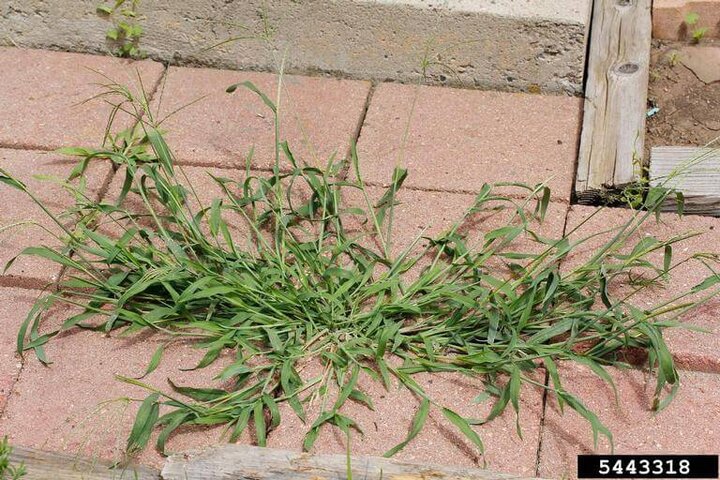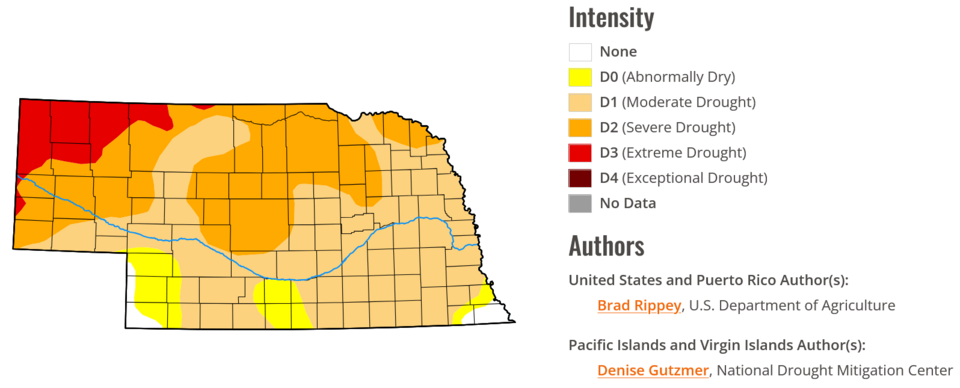
Seasonal information for Nebraska's green industry professionals.
Going In-depth
1. Staking can Decrease Trees Storm Readiness - Effects of staking on trees during storms.
2. March 31st growing degree days (GGD) - Several Nebraska sites below, Understanding Growing Degree Days
3. Pest update - Pests to watch for based on growing degree days (GGC)
Research You Can Use
4. Staking and Guying Trees, University of Minnesota Extension
Greener Landscapes - Conservation & Climate Change Mitigation in Action
5. Native/Well-Adapted Groundcovers
Timely Topics
6. Crabgrass Control
7. Spring Mulching
8. Tree Planting
For Your Information
9. Commercial/Non-commercial pesticide applicator certification - Obtaining a new license or updating an expired license.
10. Digital Diagnostic Network - Need help with diagnostics? - Submit pictures and questions for diagnosis by Nebraska Extension experts.
ProHort Update Newsletter
ProHort Update is a FREE monthly e-mail newsletter from Nebraska Extension, providing timely information to green industry professionals.
SubscribeNebraska's drought status, 3/20/2025

1. Staking Can Decrease Trees Storm Readiness
Trees are rooted down and cannot move to protected locations when wind storms arrive. Thus, they’ve evolved a response to adverse conditions enabling them to sway and bend in wind without breaking or toppling in most storms.
Trees respond to mechanical loading, like wind, with growth that adds strength to loaded components (e.g. increased trunk girth and taper) and reduces failure potential. Trunk movement in wind increases root growth and reduces crown development, resulting in a more firmly anchored tree with good crown to root ratio.
Staking, especially too tightly, leads to trees growing taller and thinner with greater crown development. It also slows root spread and tree stability. Staked trees end up at greater risk of breakage or wind throw once staking materials are removed or as the tree grows larger.
Another consequence of staking is reverse trunk taper. This is when staking causes caliper development to be uneven, resulting in wider caliper above staking straps which can cause a tree to snap off at the point it was staked.
In landscapes, isolated trees are more exposed to wind and staking is done to prevent a tree from tipping before roots develop. The goals of staking needs to be preventing a tree from tipping or reducing root ball shifting, not preventing the trunk from moving with the wind.
If a tree doesn’t require staking, don’t stake it. Along with exposed windy locations, some reasons for staking include small root systems, a top-heavy canopy, and wet soils. If needed, stake low on the trunk to allow most of the trunk to sway with wind. Avoid staking trees just above the lowest branches and only stake for one year in most cases.
Use flat, grommeted straps in place of ropes, wires, or hose segments against the trunk. Flat, wide straps spread the pressure over a wider area, reducing bark damage. Straps should lie flat against the trunk and not be bunched or twisted.
Two or three straps are typically attached to two or three wood or metal posts. One strap could also be attached to a single post inserted into the ground at a diagonal. When attaching one or more straps, attach at a point on the trunk where at least two-thirds of the trunk remains above the strap/s to move with wind. When using one diagonal stake, the strap can be placed as low as one or two feet above ground to allow even more of the trunk height to move.
2. March 31st growing degree days (GGD)
| Location | Accumulated Growing Degree Days |
| Beatrice, NE - Airport | 91 |
| Grand Island, NE - Airport | 77 |
| Lincoln, NE - Airport | 82 |
| Omaha, NE - Airport | 78 |
| Norfolk, NE - Airport | 54 |
| North Platte, NE - Airport | 38 |
| Scottsbluff, NE - Airport | 39 |
3. Pest update
| GGD - Base 50 | Insect | Lifestage present at this GGD |
| 25-100 | Zimmerman pine moth | 1st larvae |
| 45-100 | Eastern tent caterpillar | Egg hatch |
| 150 | Eastern tent caterpillar | Tents apparent |
| 100-195 | European pine sawfly | 1st larve |
| 150-175 | Spruce spider mite | 1st egg hatch |
| 220-250 | Honeylocust spider mite | Egg hatch |
| 245-440 | American plum borer | Adult flight and egg laying |
| 250 | Codling moth | 1st generation control stage |
| 400-500 | Emerald ash borer (peak adult emergence at 1000-2000) | 1st adult emergence |
| 400-575 | Euonymous scale | 1st generation |
| 400-600 | Bronze birch borer | Adults, eggs, new larvae |
| 440-700 | Ash sawfly | 1st larvae appear |
| 600-900 | Bagworm | Larvae appear |
4. Staking and Guying Trees, University of Minnesota Extension
Tree staking provides support to newly planted or damaged trees, but is not always necessary. When used, staking needs to be done correctly to prevent future problems in wind storms and damage to trees. This University of Minnesota article discusses when staking is needed, materials to use in staking, staking a tree, dealing with wind thrown trees, and splinting trees if needed.
5. Native/Well-adapted Groundcovers
Ground covers can be a great alternative to mulching the landscape bed while providing habitat for pollinators and season-long interest. Ground covers will spread and cover the ground while also providing reduced soil erosion making them a great option instead of grass on a steep slope where it is hard to maintain turf. Ground covers will spread on their own through the production of rhizomes or stolons and can become dense covers. Groundcovers can provide interest from flower blossoms as well as the interesting foliage and there are a lot of great native or well adapted groundcovers to choose from. Here are a few groundcover options for spring color:
- Prairie smoke (Geum triflorum), grows great in sunny, dry locations, blooms from May to July
- Sweet woodruff (Galium odoratum), grows great in dry shade, blooms April-May
- Carpet bugleweed (Ajuga reptans), grows in moist shade with blue blooms from May to June
- Creeping phlox (Phlox stolonifera), good bloomer in shade with purple blossoms in spring
- Pasque flower (Pulsatilla patens), very early spring bloomer with purple blossoms in full sun
- Candytuft (Iberis sempervirens), showy April-May bloomer in full sun
- Lungwort (Pulmonaria officinalis), small pink-blue blooms in April-May in part to full shade
More information: Alternatives to groundcovers/University of Wisconsin-Madison
Selected Groundcovers for Missouri/University of Missouri Extension
6. Crabgrass Control
Crabgrass germinates when soil temperatures reach 55-60 degrees. Apply crabgrass pre-emergent herbicides when soil temperatures reach that for a week-long average. Visit Soil Temperatures to check the soil temperature in your area to know when to apply herbicides for your clientele.
7. Spring Mulching
As spring gets into full swing, be sure to apply mulch properly to landscape beds, shrubs, and trees. Wood chip mulches are the best option to help regulate soil temperature, maintain moisture around plants, keep weeds out of competition with desirable plants, build soil organic matter, and reduce damage from lawn mowers and weed trimmers. There is a lot of selection when it comes to mulch type. Look for mulches that are inexpensive, hold weeds away and do not form a water-proof layer. The larger arborist chips are less prone to matting together and disrupting the movement of water into soil. Also, remember to maintain a uniform depth of 2-4 inches and don’t mound it up around plants. If the mulch layer becomes too deep, it can limit oxygen for roots, roots can grow in the excess mulch layer and decay can form on the tree trunk behind the mulch.
For more information on mulch selection, visit: Mulch Selection/Colorado State
8. Tree Planting
Trees can be planted in the spring or in the fall. Arbor Day is the last Friday in April and is a great time of the year to plant trees in Nebraska. Be sure to plant correctly for the most success with your tree.
- When planting the tree, make the hole just as deep and 2-3 times the width of the root ball.
- Be sure to find the rootball prior to digging to ensure that the first lateral roots are just below the soil surface.
- Remove any potential stem girdling roots at planting to reduce the chance of this problem killing the tree years down the road.
- For more information, visit: Tree Planting/Lancaster County Extension
9. Commercial/Non-commercial pesticide applicators
If you have a pesticide applicators license which expired in April 2025 or you need to get a new license, testing options are listed below.
Testing-only Options
- Closed-book exams are given by the Nebraska Department of Agriculture (NDA). Preregistration is not required and there is no cost. Visit the link below for a list of available test-only dates, times and locations - https://pested.unl.edu/.
- NDA computer-based testing is provided through the Pearson-Vue company. Click here for a list of testing sites, categories available, dates, and registration information. Cost $55 per exam. (For applicators with multiple categories on their license, each category is charged the full testing fee.)
2025 Commercial/non-commercial training is held from January through April. Training schedules are available at https://pested.unl.edu/. Help your employees be successful at getting a license by purchasing study materials.
10. Digital Diagnostic Network - Need help with diagnostics?
Do you or your clients have questions you need help answering? Maybe you are a lawn care person and they're asking about trees, shrubs, or flowers? While you can refer them to their local Extension office, another option is Digital Diagnostic Network. Homeowners, lawn care professionals, pest control operators and others are invited to submit questions and photos through this website or with the assistance from an Extension professional at any Nebraska Extension office. All offices are equipped with high-resolution digital image capturing technology. Whether the question is about a lawn weed, insects on a plant, diseases in a shrub border or other, an expert panel of Extension professionals will review and respond to the question. To get started, create an account so the question can be reviewed and responded to via email. For more information and to create an account, go to Digital Diagnostic Network.
Bugging Out With Your Camera Phone - Tips on how to get a good picture.
Reference to commercial products or trade names is made with the understanding that no discrimination is intended and no endorsement by Nebraska Extension is implied. Use of commercial and trade names does not imply approval or constitute endorsement by Nebraskas Extension. Nor does it imply discrimination against other similar products.
Upcoming Events
Continuing Issues
Fruits & Vegetables
Trees & Shrubs
- Emerald Ash Borer Resources - EAB has been found in several Nebraska locations. Homeowners are encouraged to wait to begin treating their ash trees until the insect is confirmed within 15 miles of their location.
- NFS Tree Storm Damage Resources